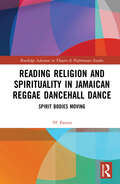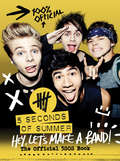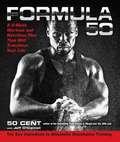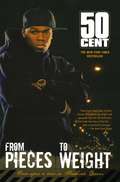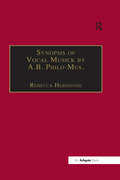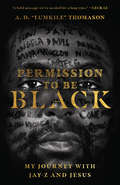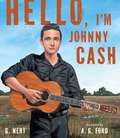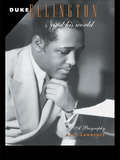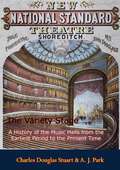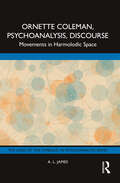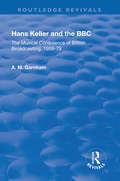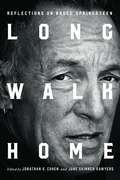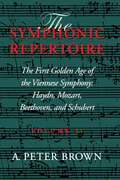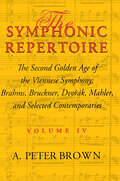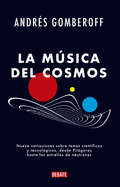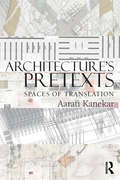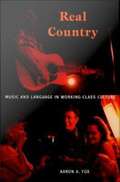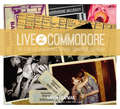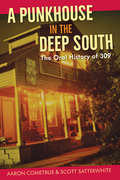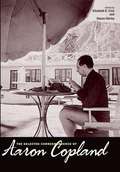- Table View
- List View
Reading Religion and Spirituality in Jamaican Reggae Dancehall Dance: Spirit Bodies Moving (Routledge Advances in Theatre & Performance Studies)
by 'H' PattenThis book explores the genealogy of Jamaican dancehall while questioning whether dancehall has a spiritual underscoring, foregrounding dance, and cultural expression. This study identifies the performance and performative (behavioural actions) that may be considered as representing spiritual ritual practices within the reggae/dancehall dance phenomenon. It does so by juxtaposing reggae/dancehall against Jamaican African/neo-African spiritual practices such as Jonkonnu masquerade, Revivalism and Kumina, alongside Christianity and post-modern holistic spiritual approaches. This book will be of great interest to students and scholars in performance studies, popular culture, music, theology, cultural studies, Jamaican/Caribbean culture, and dance specialists.
5 Seconds of Summer Book of Stuff
by 5 Seconds of SummerTo the very raucous 5SOSfam--wanna find out what the band's been up to over the last year? <P><P>Jam-packed with their own photos, anecdotes of life on and off the road, and much more, the only official 5 Seconds of Summer book out this year means now you can . . .Luke, Michael, Calum, and Ash are having a mad year: a world tour, writing their new album, signing up their first band on their own record label, breaking the internet--it's been eventful to say the least. The good news is they want to share it all with you!This book is a special thanks for (officially) being the best fan army around!
Hey, Let's Make a Band!
by 5 Seconds of SummerHi everyone,This book is pretty much our official story so far. It really does seem only like last week we played our first gig at the Annandale Hotel in Sydney. Since then we've been given the opportunity to turn into the people and musicians we wanted to be.The people who gave us the opportunity were the fans. So this book is like a thank-you. We want everyone to know the story of how four western Sydney teenagers picked up their instruments and dreamed of being one of the biggest bands in the world. There are also some embarrassing photos of us derping around and some facts that some of us didn't even know. So we hope you enjoy it!Love, cal, luke, ash, and mike x
Formula 50: A 6-Week Workout and Nutrition Plan That Will Transform Your Life
by 50 Cent Jeff O'ConnellGet fit like 50 Cent: The phenomenally fit superstar rapper reveals his strategic six-week workout plan for achieving a ripped body--and developing the mental toughness to stay in shape for a lifetime. Survival is a recurring theme of 50 Cent's lyrics, and his life. That's why, with obesity rates soaring and fitness levels declining, he wants to give everyone an all-access pass to his premium plan for lifelong fitness. In Formula 50, the mega-successful entertainer and entrepreneur unleashes the power of metabolic resistance training (MRT), the key ingredient that has helped him achieve the famously buff physique that makes his music videos sizzle. Through MRT, 50 Cent's fitness plan breaks down the barriers between traditional weight training and cardio workouts, accelerating fat loss while building muscle and improving overall fitness. Designed for a six-week rollout for total mind-body transformation, the Formula 50 regimen builds willpower while it builds physical power. This fitness book also focuses on nutrition-- readers will discover the unique dietary combinations that fuel 50 Cent's workouts. Coauthored with Jeff O'Connell, health journalist and editor-in-chief at Bodybuilding.com (the world's largest fitness website), the book delivers a payoff that goes beyond six-pack abs and flab-free pecs: This is a fitness plan that boosts energy, endurance, flexibility, and mobility. The result is a body you've always dreamed of--and the mindset to attain the rest of your dreams.
From Pieces to Weight: Once Upon a Time in Southside, Queens
by 50 Cent Kris ExGET RICH OR DIE TRYIN' That's what this book is about--the good times and the bad times. I wrote this book to explain the world I come from. To a lot of people, I may be too young to reflect on life. And they may be right. But I'd be wasting my blessings if I didn't use the attention I'm getting to shed light on the experiences that have caused me to say the things I say and make the kind of music I make. I want to explain my environment to those who don't come any closer to it than the records they buy or the images they see on television. People want the truth. Even if they can't handle it, they want it. I let you know that I survived nine bullets not to sell records, but because it's the truth. Every time I sit down for an interview, I'm asked, "Well, 50, how did it feel to get shot nine times?" But those stories don't hold the weight, the pain, or the hope of my experience. It just can't. This is my mindset and these are the things that go on. This is why I say the rhymes that I say. This is what happened when I was trying to get rich before I died in Southside Queens. So begins From Pieces to Weight: Once Upon a Time in Southside Queens, a violent and introspective memoir that reveals not only 50's story but the story of a generation of youth faced with hard choices and very little options. A tale of sacrifice, transformation and redemption, but it is also one of hope, determination and the power of self. Told in 50's own unique voice, the narrative drips with the raw insight, street wisdom, and his struggle to survive at all costs...and behold the riches of the American Dream. 50 Cent has sold over 20 million records worldwide. His record-breaking debut album Get Rich or Die Tryin' has sold over 12 million units worldwide, with the largest debut in SoundScan history. While his sophomore effort, The Massacre, sold over 1.14 million copies in its fi rst four days of release, he has since become the fi rst artist to have four songs in the top ten of Billboard's Hot 100 since The Beatles in 1964. His business empire includes: a record label (G-Unit Records, a division of Interscope Records), apparel/footwear ventures (G-Unit Clothing and footwear, joint ventures through the Ecko Clothing Company and Reebok, respectively), vitamin water (Formula 50, through Glacéau's Vitamin Water), watch line (G-Unit Watches, through Jacob & Co), and a video game (50 Cent: Bulletproof, through Vivendi Games). His future plans are to dominate the film and television worlds through two new G-Unit ventures in film and television...and his most prized project: the nonprofit organization The G-Unity Foundation, which aims to better the life of urban youth.
Synopsis of Vocal Musick by A.B. Philo-Mus.
by A. B. Philo-mus.Synopsis of Vocal Musick, by the unidentified A.B., was published in London in 1680 and appears to have only ever had one edition. Its relatively short shelf-life belies its importance to the history of early British music theory. Unlike other English theoretical writings of the period, the Synopsis derives many of its aspects from the continental theoretical tradition, including the first references in English theory to the modern fractional time signatures that had been invented in Italy in the mid-seventeenth century, the first references in English to compound time and the first explanations of tempo terms such as Adagio and Presto. In these respects the treatise forms an important link between English and continental theoretical traditions and may have encouraged the adoption of Italian principles which became a common feature of English writings by the early eighteenth century. The treatise is essentially in two parts. The first section of the book comprises rudimentary instruction on understanding notation and intervals, descriptions of common vocal ornaments and instruction in the process of learning to sing. The second part consists of a selection of psalms, songs and catches which are provided as exercises for the singer, though several of them require a reasonably advanced degree of skill. These pieces provide valuable insight into the way both sacred and secular music might have been performed by amateur musicians in the Restoration period. They include 14 rare English madrigal settings by the Italian composer Gastoldi - further evidence of the Italian influence which pervades the text. This is the first modern edition of the Synopsis, and indeed the first edition to appear since its original publication.
Permission to Be Black: My Journey with Jay-Z and Jesus
by A. D. ThomasonEmbracing your Christian identity does not make you "soft." Embracing your Black identity does not make you less Christian. Throughout American history, Black people were not given the freedom to acknowledge their suffering. A. D. Thomason believes that the Holy Spirit brings freedom and liberation as we're able to name our pain, recognize its roots in history and society, and seek healing. While many saw a confident, six-foot-five Black man, A. D. "Lumkile" Thomason lived most of his life in fear and anguish, deeply wounded by encounters with violence, abandonment, and family tragedy. Hiding behind a tough exterior, Adam earned his "Black card" but felt joyless inside. Even traveling around the globe to play professional basketball could not resolve his despair. But in the art of Jay-Z, A. D. discovered stirring honesty that gave voice to his own expressions of longing. And in the gospel of Jesus, he experienced the healing and salvation that had long evaded him. Now through what he calls "kingdom therapy," he's figuring out how to redefine the Jay-Z and Jesus that make up his blackness. A. D. uses his artistry as a poet and storyteller to share how he confessed his internalized pain and embraced the liberating joy of Christ. He writes for millennials, emerging adults, and anyone else who's ready to acknowledge the reality of racial trauma and our need to confront it. A. D.'s powerful story gives you permission to be Black, to be Christian, and to be the person God has made you to be.
Hello, I'm Johnny Cash
by G. Neri A. G. FordThere’s never been anyone like music legend Johnny Cash. His deep voice is instantly recognizable, and his heartfelt songs resonate with listeners of all ages and backgrounds. G. Neri captures Johnny’s story in beautiful free verse, portraying an ordinary boy with an extraordinary talent who grew up in extreme poverty, faced incredible challenges, and ultimately found his calling by always being true to the gift of his voice. A. G. Ford’s luscious paintings of the dramatic southern landscape of Johnny Cash’s childhood illuminate this portrait of a legend, taking us from his humble beginnings to his enormous success on the world stage.
Duke Ellington and His World: A Biography
by A. H. LawrenceBased on lengthy interviews with Ellington's bandmates, family, and friends, Duke Ellington and His World offers a fresh look at this legendary composer. The first biography of the composer written by a fellow musician and African-American, the book traces Ellington's life and career in terms of the social, cultural, political, and economic realities of his times. Beginning with his birth in Washington, DC, through his first bands and work at the legendary Cotton Club, to his final great extended compositions, this book gives a thorough introduction to Ellington's music and how it was made. It also illuminates his personal life because, for Ellington, music was his life and his life was a constant inspiration for music.
The Variety Stage: A History of the Music Halls from the Earliest Period to the Present Time
by A. J. Park Charles Douglas StuartMusic hall was a type of British theatrical entertainment that was popular from the early Victorian era, beginning around 1850. It faded away after 1918 as the halls rebranded their entertainment as variety. Perceptions of a distinction in Britain between bold and scandalous Music Hall and subsequent, more respectable Variety differ. Music hall involved a mixture of popular songs, comedy, speciality acts, and variety entertainment. The term is derived from a type of theatre or venue in which such entertainment took place. In North America vaudeville was in some ways analogous to British music hall, featuring rousing songs and comic acts.“To the general reader, as well as to the thoughtful observer of the social institutions of the English people, the story of the rise, progress and present condition of Variety Stage in this country presents features of peculiar attraction.In The History of the Variety Stage they have endeavoured to deal in a bright, chatty and anecdotal manner, not only with the Music Halls of the past and present, but also with the picturesque and variegated profession which has called them into existence, and while presenting to the statistician, the antiquarian, and the student of domestic history, a substantial and painstaking work of research, they have tried to render at the same time a graphic panorama of the variety world as it was and as it is today.”-Preface.
Ornette Coleman, Psychoanalysis, Discourse: Movements in Harmolodic Space (The Lines of the Symbolic in Psychoanalysis Series)
by A. L. JamesOrnette Coleman, Psychoanalysis, Discourse develops tools from psychoanalysis for the analysis of Ornette Coleman's discourse.In this psychoanalytic, philosophical and musical meditation on what it means to follow, A. L. James presents an approach to the analysis of discourse that is a kind of listening for listening – an attempt to discern in and between the lines of Coleman's speech the implication of new ways to listen, new ways to experience Coleman’s music as movement and space – as Movements in Harmolodic Space. Each chapter of this book is oriented with respect to fragments from Coleman’s discourse, dealing with a piece, or collection of pieces, from Coleman’s work, with particular attention to the implication of relations and relationality. Insofar as Coleman’s discourse about his work also contains allusions to fields beyond music, it develops tools that draw elements and structures from these fields together, finding in their relation echoes and parallels.Ornette Coleman, Psychoanalysis, Discourse will be of great interest to psychoanalysts, musicians, and musicologists. It will be relevant for academics and scholars of psychoanalytic and Lacanian studies, music, and cultural studies.
Hans Keller and the BBC: The Musical Conscience of British Broadcasting 1959-1979
by A. M. GarnhamOriginally published in 2003, Hans Keller and the BBC is a vivid portrait of the changing face of British broadcasting seen through the work of one of its most significant personalities. Starting with an examination of Keller’s early psychological interests, and the evolution of his method of ‘functional analysis’ of music (with which the BBC was intimately concerned), the book charts the huge contribution Keller made to British music during his BBC years. Also explored in detail are the successive crises of the Third Programme and its replacement by Radio 3, together with Keller’s leading role in opposing the decline of the BBC’s cultural idealism. Drawing on a wealth of primary sources, much of which has never been previously examined, this study paints a striking picture of Keller’s personality in combination with the BBC’s turbulent inner workings, showing the effect of one remarkable individual on the most powerful musical institution in 20th-century Britain.
Long Walk Home: Reflections on Bruce Springsteen
by Richard Russo Eric Alterman David L. Ulin Paul Muldoon Wesley Stace Elijah Wald Daniel Wolff Peter Ames Carlin Regina Barreca Greil Marcus Kenneth Womack Jim Cullen Dermot Bolger Deepa Iyer Jefferson Cowie A. O. Scott Joel Dinerstein Nancy Bishop Gillian G. Gaar Louis Masur Natalie Adler Martyn Joseph Lauren Onkey Colleen Sheehy Frank Stefanko Irwin Streight Wayne SwanBruce Springsteen might be the quintessential American rock musician but his songs have resonated with fans from all walks of life and from all over the world. This unique collection features reflections from a diverse array of writers who explain what Springsteen means to them and describe how they have been moved, shaped, and challenged by his music. Contributors to Long Walk Home include novelists like Richard Russo, rock critics like Greil Marcus and Gillian Gaar, and other noted Springsteen scholars and fans such as A. O. Scott, Peter Ames Carlin, and Paul Muldoon. They reveal how Springsteen’s albums served as the soundtrack to their lives while also exploring the meaning of his music and the lessons it offers its listeners. The stories in this collection range from the tale of how “Growin’ Up” helped a lonely Indian girl adjust to life in the American South to the saga of a group of young Australians who turned to Born to Run to cope with their country’s 1975 constitutional crisis. These essays examine the big questions at the heart of Springsteen’s music, demonstrating the ways his songs have resonated for millions of listeners for nearly five decades. Commemorating the Boss’s seventieth birthday, Long Walk Home explores Springsteen’s legacy and provides a stirring set of testimonials that illustrate why his music matters.
The Puppy Pianist: A fun children's book for boys and girls age 6 and up
by A. P. HernándezWilliam’s a piano teacher and Lola is his inseparable Maltese Bichon dog. Lola has always been surrounded by music because she loves listening to her owner play his wonderful instrument. One day, Lola decides to jump onto the piano bench. She’s very clear about it: she is going to be a puppy pianist. What's inside? •A fun story with numerous illustrations to make reading more enjoyable. •A captivating tale to encourage the habit of reading; it offers children a story that matches their interests. Educational value of this book: •Increases vocabulary. •Promotes self-esteem because Lola's story can help children feel more confident. •Teaches children that we all have special talents that make us unique and valuable. •Fosters resilience because Lola confronts challenges throughout the story. A children's book for ages 6 and up.
The Symphonic Repertoire, Volume II: The First Golden Age of the Viennese Symphony: Haydn, Mozart, Beethoven, and Schubert
by A. Peter BrownCentral to the repertoire of Western art music since the 18th century, the symphony has come to be regarded as one of the ultimate compositional challenges. Surprisingly, heretofore there has been no truly extensive, broad-based treatment of the genre, and the best of the existing studies are now several decades old. In this five-volume series, A. Peter Brown explores the symphony from its 18th-century beginnings to the end of the 20th century. Synthesizing the enormous scholarly literature, Brown presents up-to-date overviews of the status of research, discusses any important former or remaining problems of attribution, illuminates the style of specific works and their contexts, and samples early writings on their reception. The Symphonic Repertoire provides an unmatched compendium of knowledge for the student, teacher, performer, and sophisticated amateur. The series is being launched with two volumes on the Viennese symphony.Volume II The First Golden Age of the Viennese SymphonyHaydn, Mozart, Beethoven, and SchubertVolume II considers some of the best-known and most universally admired symphonies by Haydn, Mozart, Beethoven, and Schubert, who created what A. Peter Brown designates as the first golden age of the Viennese symphony during the late 18th and first three decades of the 19th century. The last two dozen symphonies by Haydn, half dozen by Mozart, and three by Schubert, together with Beethoven's nine symphonies became established in the repertoire and provided a standard against which every other symphony would be measured. Most significantly, they imparted a prestige to the genre that was only occasionally rivaled by other cyclic compositions. More than 170 symphonies from this repertoire are described and analyzed in The First Golden Age of the Viennese Symphony, the first volume of the series to appear.
The Symphonic Repertoire, Volume IV: The Second Golden Age of the Viennese Symphony: Brahms, Bruckner, Dvorák, Mahler, and Selected Contemporaries
by A. Peter BrownCentral to the repertoire of Western art music since the 18th century, the symphony has come to be regarded as one of the ultimate compositional challenges. Surprisingly, heretofore there has been no truly extensive, broad-based treatment of the genre, and the best of the existing studies are now several decades old. In this five-volume series, A. Peter Brown explores the symphony from its 18th-century beginnings to the end of the 20th century. Synthesizing the enormous scholarly literature, Brown presents up-to-date overviews of the status of research, discusses any important former or remaining problems of attribution, illuminates the style of specific works and their contexts, and samples early writings on their reception. The Symphonic Repertoire provides an unmatched compendium of knowledge for the student, teacher, performer, and sophisticated amateur. The series is being launched with two volumes on the Viennese symphony.Volume IV The Second Golden Age of the Viennese SymphonyBrahms, Bruckner, Dvorák, Mahler, and Selected ContemporariesAlthough during the mid-19th century the geographic center of the symphony in the Germanic territories moved west and north from Vienna to Leipzig, during the last third of the century it returned to the old Austrian lands with the works of Brahms, Bruckner, Dvorák, and Mahler. After nearly a half century in hibernation, the sleeping Viennese giant awoke to what some viewed as a reincarnation of Beethoven with the first hearing of Brahms's Symphony No. 1, which was premiered at Vienna in December 1876. Even though Bruckner had composed some gigantic symphonies prior to Brahms's first contribution, their full impact was not felt until the composer's complete texts became available after World War II. Although Dvorák was often viewed as a nationalist composer, in his symphonic writing his primary influences were Beethoven, Schubert, and Brahms. For both Bruckner and Mahler, the symphony constituted the heart of their output; for Brahms and Dvorák, it occupied a less central place. Yet for all of them, the key figure of the past remained Beethoven. The symphonies of these four composers, together with the works of Goldmark, Zemlinsky, Schoenberg, Berg, Smetana, Fibich, Janácek, and others are treated in Volume IV, The Second Golden Age of the Viennese Symphony, covering the period from roughly 1860 to 1930.
Inventory
by Chuck Klosterman A. V. ClubEach week, the writers of The A.V. Club issue a slightly slanted pop-culture list filled with challenging opinions (Is David Bowie's "Young Americans" nearly ruined by saxophone?) and fascinating facts. Exploring 24 great films too painful to watch twice, 14 tragic movie-masturbation scenes, 18 songs about crappy cities, and much more, Inventory combines a massive helping of new lists created especially for the book with a few favorites first seen at avclub.com and in the pages of The A.V. Club's sister publication, The Onion. But wait! There's more: John Hodgman offers a set of minutely detailed (and probably fictional) character actors. Patton Oswalt waxes ecstatic about the "quiet film revolutions" that changed cinema in small but exciting ways. Amy Sedaris lists 50 things that make her laugh. "Weird Al" Yankovic examines the noises of Mad magazine's Don Martin. Plus lists from Paul Thomas Anderson, Robert Ben Garant, Tom Lennon, Andrew W.K., Tim and Eric, Daniel Handler, and Zach Galifianakis -- and an epic foreword from essayist Chuck Klosterman.
La música del cosmos: Nueve variaciones sobre temas científicos y tecnológicos, desde Pitágoras hasta las estrellas de neutrones
by ANDRES GOMBEROFFUn entretenido recorrido que cruza momentos y temas científicos con algunas de las canciones más importantes y reconocidas a nivel mundial. ¿Qué pueden tener en común una canción de Led Zeppelin e Isaac Newton? Para Andrés Gomberoff, quien ya nos ha impresionado con Física y berenjenas como con Einstein para perplejos, tanto la banda británica como el genio moderno pueden explicar la perfección absoluta del tiempo. Para ello, el destacado científico chileno recorrerá la historia de la ciencia antigua y moderna para explicar “la banda sonora del universo”. Acompañándose de canciones de David Bowie, Bob Dylan, Brian Wilson, The Beatles y otros artistas relevantes del siglo XX, pero también por Beethoven, Napoleón y Michael Faraday, en La música del cosmos encontramos un acceso radicalmente diferente y original a la divulgación científica.
Architecture's Pretexts: Spaces of Translation
by Aarati KanekarThe aim of this book is to expose readers to architecture’s pretexts that include literary narratives, film, theatre, painting, music, and ritual, as a bridge between diverse intellectual territories and architecture. It introduces a selection of seminal modern and contemporary architectural projects, their situation within the built environment, and their intellectual and formal situation/context as pretexts and design paradigms. Connections between diverse bodies of information will be cultivated along with the ability to posit consequential relationships for the production of architecture. Architecture’s Pretexts seeks to cultivate a vision for architecture that sponsors operative links between the discipline of architecture and those outside of architecture. Exploring the works of various architects including Guiseppe Terragni, Peter Eisenman, Peter Zumthor, Perry Kulper and Smout Allen, and Rem Koolhaas, this book provides the framework to understanding architecture through the lens of art. Key concepts discussed are: allegories, diagrams, form, material, montage, movement, musical ratios, narrative sequence and representation. A valuable tool, with over 75 black and white illustrations, for students and professionals interested in interdisciplinary methods of design thinking.
Real Country: Music and Language in Working-Class Culture
by Aaron A. FoxIn Lockhart, Texas, a rural working-class town just south of Austin, country music is a way of life. Conversation slips easily into song, and the songs are full of conversation. Anthropologist and musician Aaron A. Fox spent years in Lockhart making research notes, music, and friends. In Real Country, he provides an intimate, in-depth ethnography of the community and its music. Showing that country music is deeply embedded in the textures of working-class life, Fox argues that it is the cultural and intellectual property of working-class people and not only of the Nashville-based music industry or the stars whose lives figure so prominently in popular and scholarly writing about the genre. Fox spent hundreds of hours observing, recording, and participating in talk and music-making in homes, beer joints, and garage jam sessions. He renders the everyday life of Lockhart's working-class community in detail, right down to the ice cold beer, the battered guitars, and the technical skills of such local musical legends as Randy Meyer and Larry "Hoppy" Hopkins. Throughout, Fox focuses on the human voice. His analyses of conversations, interviews, songs, and vocal techniques show how feeling and experience are expressed, and how local understandings of place, memory, musical aesthetics, working-class social history, race, and gender are shared. In Real Country, working-class Texans re-imagine their past and give voice to the struggles and satisfactions of their lives in the present through music.
Live at the Commodore
by Aaron ChapmanVancouver's Commodore Ballroom is, like New York's CBGB's and Los Angeles's Whiskey a Go-Go, one of the most venerated rock clubs in the world; originally built in 1930, it's hosted a who's-who of music greats before they made it big: The Police, The Clash, Blondie, Talking Heads, Nirvana, New York Dolls, U2, and, more recently, Lady Gaga and the White Stripes. Filled with never-before-published photographs, posters, and paraphernalia, Live at the Commodore is a visceral, energetic portrait of one of the world's great rock venues.Aaron Chapman is a musician and journalist, and the author of Liquor, Lust, and the Law.
A Punkhouse in the Deep South: The Oral History of 309
by Aaron Cometbus Scott SatterwhiteRadical subcultures in an unlikely place Told in personal interviews, this is the collective story of a punk community in an unlikely town and region, a hub of radical counterculture that drew artists and musicians from throughout the conservative South and earned national renown. The house at 309 6th Avenue has long been a crossroads for punk rock, activism, veganism, and queer culture in Pensacola, a quiet Gulf Coast city at the border of Florida and Alabama. In this book, residents of 309 narrate the colorful and often comical details of communal life in the crowded and dilapidated house over its 30-year existence. Terry Johnson, Ryan “Rymodee” Modee, Gloria Diaz, Skott Cowgill, and others tell of playing in bands including This Bike Is a Pipe Bomb, operating local businesses such as End of the Line Cafe, forming feminist support groups, and creating zines and art. Each voice adds to the picture of a lively community that worked together to provide for their own needs while making a positive, lasting impact on their surrounding area. Together, these participants show that punk is more than music and teenage rebellion. It is about alternatives to standard narratives of living, acceptance for the marginalized in a rapidly changing world, and building a sense of family from the ground up. Including photos by Cynthia Connolly and Mike Brodie, A Punkhouse in the Deep South illuminates many individual lives and creative endeavors that found a home and thrived in one of the oldest continuously inhabited punkhouses in the United States.
Copland: 1900 Through 1942
by Aaron Copland Vivian PerlisThis memoir begins with Copland's Brooklyn childhood and takes us through his years in Paris, the creation of his early works, and his arrival at Tanglewood. Rich with remembrances from Leonard Bernstein, Virgil Thomson, and Nadia Boulanger, as well as a trove of letters, photographs, and scores from Copland's collection.
The Selected Correspondence of Aaron Copland
by Aaron Copland Wayne Shirley Elizabeth Bergman CristThis is the first book devoted to the correspondence of composer Aaron Copland, covering his life from age eight to eighty-seven. The chronologically arranged collection includes letters to many significant figures in American twentieth-century music as well as Copland's friends, family, teachers, and colleagues. Selected for readability, interest, and the light they cast upon the composer's thoughts and career, the letters are carefully annotated and each published in its entirety. Copland was a gifted and natural letter writer who revealed much more about himself in his letters than in formal writings in which he was conscious of his position as spokesman for modern music. The collected letters offer insights into his music, personality, and ideas, along with fascinating glimpses into the lives of such other well-known musicians as Leonard Bernstein, Carlos Chávez, William Schuman, and Virgil Thomson.
What to Listen For in Music
by Aaron CoplandCalled the definitive guide to musical enjoyment ("Forum"), this classic work is the only book of its kind written by an eminent American composer. With his provocative suggestions, Copland guides readers through a deeper appreciation of the most rewarding of all art forms. Revised reissue.
